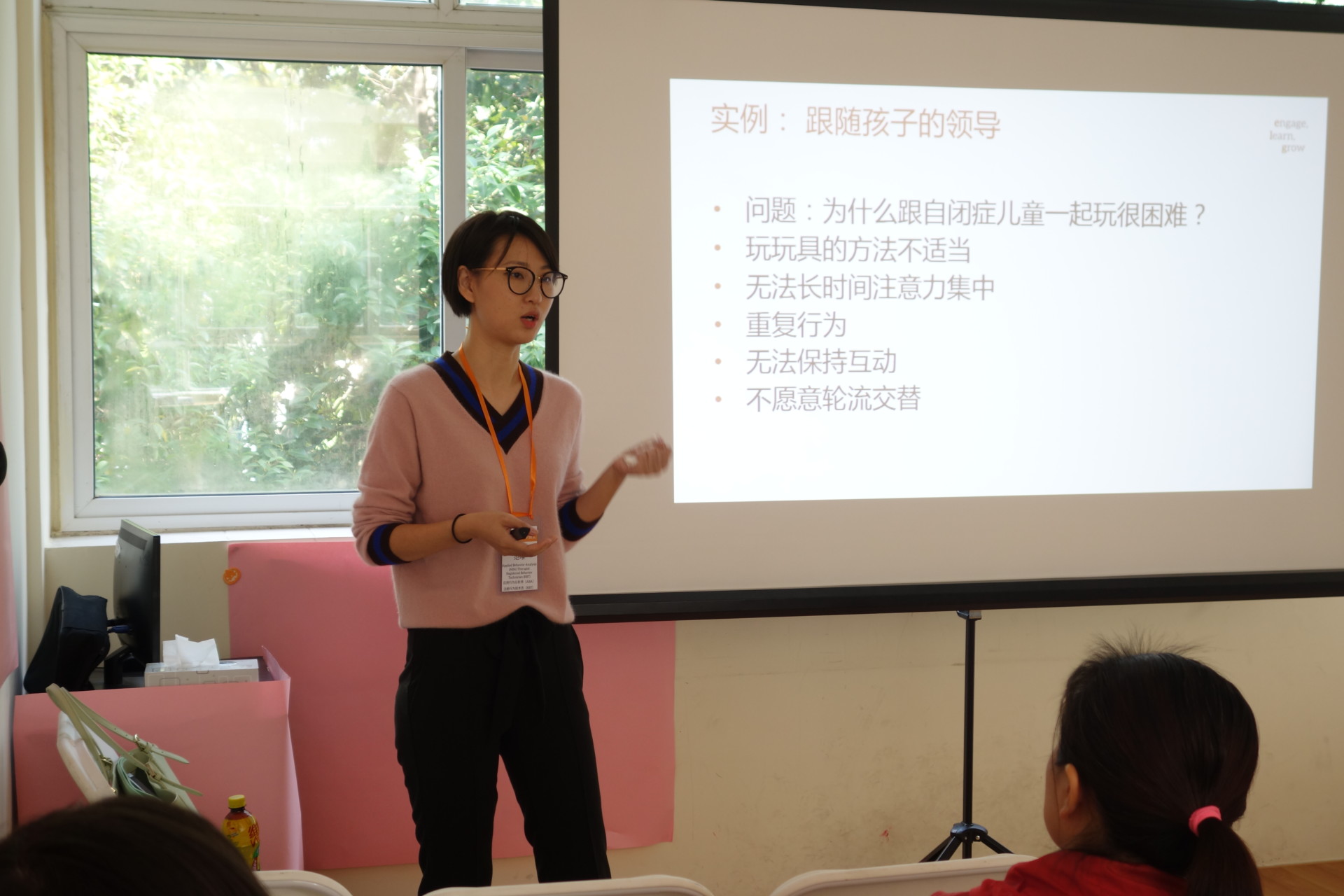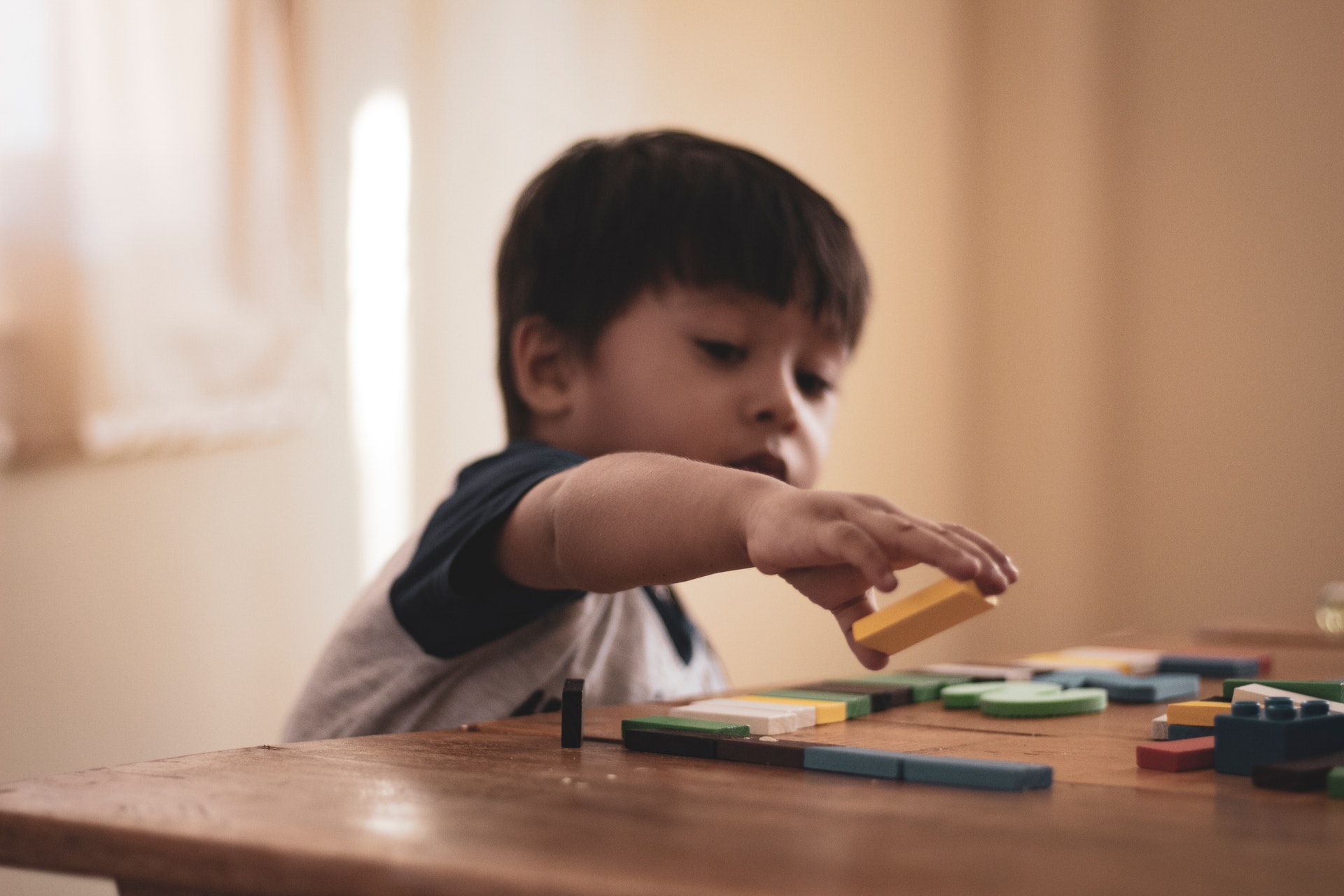By Miriam McBreen, Reading Specialist

In her role as a Board Certified Behavior Analyst (BCBA) at ELG, Joy Fan helps to support children experiencing behavioral difficulties and their families. She works closely with parents and other specialists to identify each child’s needs and how best to address these during therapy, at home, at school, and within the wider community. In this article, we share some insight into what a BCBA is and what they do, to help you know if they may be the right fit for your child.
What is a BCBA?
After graduating from her master’s in developmental psychology at the Teacher’s College of Columbia University, Joy started working as an applied behavior analysis (ABA) therapist, with a focus on natural environment teaching, verbal behavior, and discrete trial training. To gain a deeper understanding of ABA, and most importantly to be able to do more with that knowledge, she decided to get accredited as a BCBA.
To be able to practice independently as an ABA therapist, BCBA certification is needed.
To get certified, therapists must complete:
-
a master’s degree,
-
approved graduate courses in ABA,
-
courses in the ethics of working with vulnerable populations,
-
at least 1500 hours of supervised practical experience,
-
and at least 75 hours of direct supervision.
To get varied experience with ABA, Joy completed her training under multiple supervisors, working with a range of children at Missing Piece, an autism center in Keller, Texas.
To maintain their certification, BCBAs must complete ongoing education and supervision requirements to ensure they remain up-to-date on the best, evidence-based practices in behavioral analysis.

What does a BCBA do?
BCBAs use principles of ABA to help increase good or adaptive behaviors, such as language, self-help, play, and social skills. They also work with children to help decrease maladaptive behaviors, such as self-injurious behavior, aggression, rigidity, and disruptive behavior. While BCBAs most often work with children with an autism spectrum disorder, the strategies used in ABA can be helpful to a range of children with behavior difficulties.
To make sure each child receives treatment tailored to their needs, the BCBA starts by conducting skill-based and behavior-based assessments. Then, in collaboration with the child’s parents and their support team, which can include teachers and other support professionals such as speech-language therapists or occupational therapists, the BCBA works to elaborate an individualized behavior plan to help the child overcome difficulties in behavior, communication, and social interaction. The plan is continually updated based on collection and analysis of data tracking the child’s progress.

Most of the strategies used in ABA aim to promote stability and predictability; they set the child up for success. One example of a strategy is providing the child with choices. This avoids the child having to say “no”, while still setting limits on what is available to them. It also increases the child’s buy-in for decisions, promoting compliance. For children who struggle with abrupt transitions, providing warnings using a timer can help them understand how long they have until they need to transition, reducing surprise.

Another strategy for children who struggle with long tasks is to break up the task into smaller demands. For example, Joy once worked with a 4-year old who would engage in problem behaviors (e.g. spitting, screaming, running away) to escape Circle Time. Joy first worked to figure out the behaviors’ function, which was to escape a situation where the child found aversive. In collaboration with the child’s support team, she then implemented a behavior plan where the task was broken down into smaller doses; every time he had to be in a group setting, a timer was set so that he only needed to stay in the room for short amounts of time. Problem behaviors were ignored, and when the timer went off, he was praised for staying in the room and given a short break. Once he could consistently stay in the room with other children for the period, they gradually increased the time he needed to stay so he would eventually be able to tolerate staying for the full duration of Circle Time.

Finally, to ensure that children receive holistic, consistent support both at home and in school, BCBAs work with parents and teachers to help them replicate what has been taught in therapy and guide them in understanding how to extend these tools to address challenging behaviors at home, at school, and in the wider community. For more about how to carry over behavior therapy into your home life, click here.
In this article, we shared some insight into what a BCBA does, and how they can help support children with a range of behavioral issues. To find out more and figure out if they are the right fit for your family, please reach out to us at [email protected], 400 6129 423, or +86 21 5206 6273.
